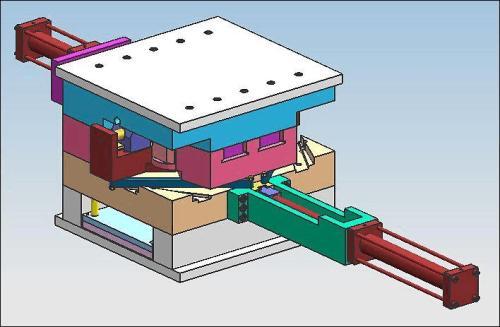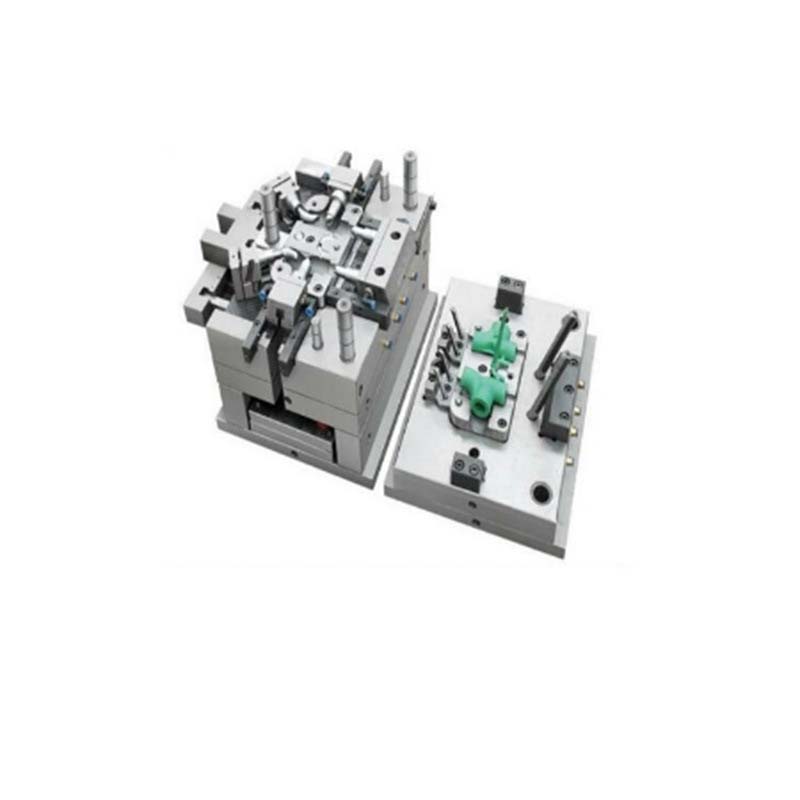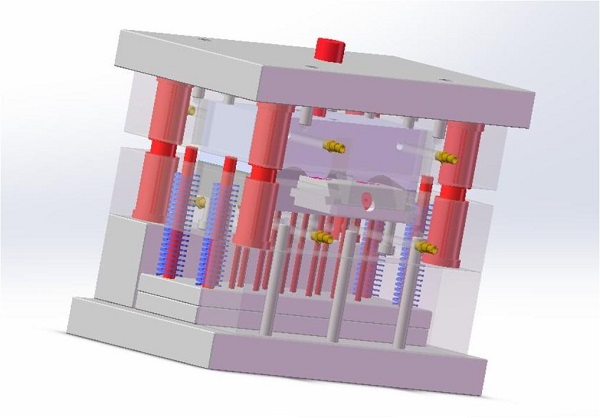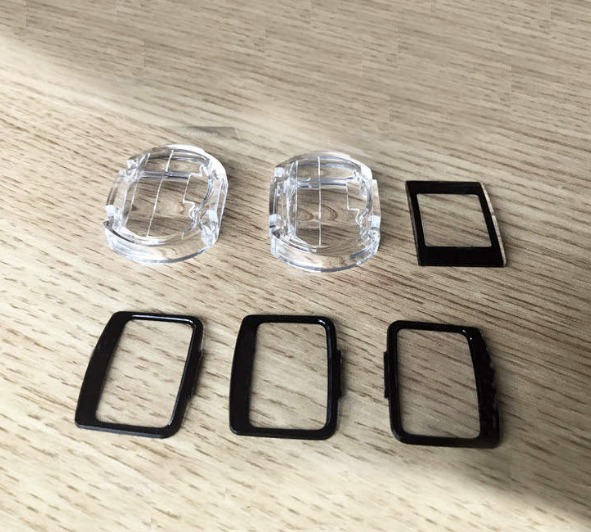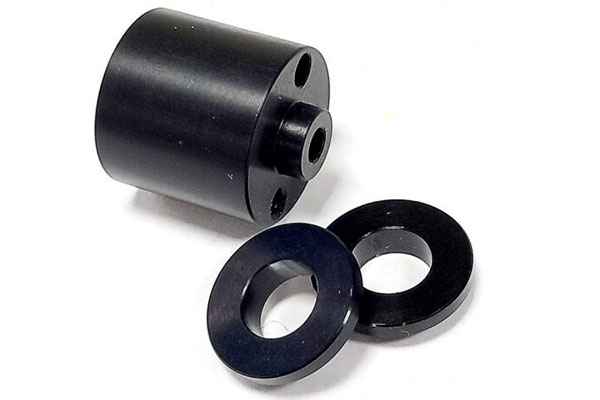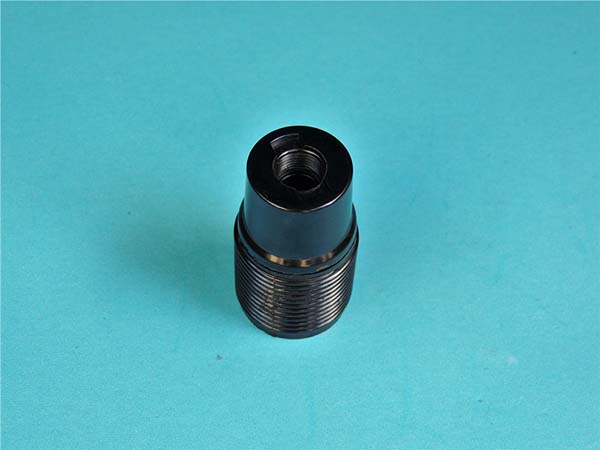Introduction
The Significance of Plastic Molding
In modern manufacturing, plastic molding stands as a cornerstone technology, playing a pivotal role across a vast spectrum of industries. Its significance cannot be overstated, as it has become an indispensable part of our daily lives, from the products we use at home to the advanced components in high - tech industries.
One of the primary industries where plastic molding is extensively applied is the automotive industry. For instance, in a typical car, numerous parts are made through plastic molding processes. Interior components such as dashboards, door panels, and seat trims are often crafted from plastics. These plastic parts not only reduce the overall weight of the vehicle, which in turn improves fuel efficiency, but also offer design flexibility. They can be molded into complex shapes, allowing for ergonomic and aesthetically pleasing designs. Exterior parts like bumpers are also commonly made of plastic, as plastics can provide shock - absorption properties and are more cost - effective to produce compared to metal alternatives. According to industry reports, in the automotive industry, plastic components account for approximately 10 - 15% of the total vehicle weight, and this percentage is steadily increasing as manufacturers seek to improve fuel economy and reduce production costs.
The electronics industry is another field that heavily relies on plastic molding. In smartphones, the outer casing, battery covers, and even some internal components are plastic - molded. The miniaturization trend in electronics requires components with precise shapes and high - quality finishes, and plastic molding techniques can meet these demands. For Yigu Technology example, injection molding, a popular plastic molding method, can produce intricate and highly detailed plastic parts with tight tolerances. In a laptop, the keyboard frame, display bezels, and the main body housing are often made through plastic molding processes. These plastic parts protect the delicate electronic components inside, while also providing a lightweight and durable outer structure. It is estimated that in the consumer electronics market, plastic components make up more than 50% of the total volume of most devices.
Plastic molding is also crucial in the medical industry. Disposable medical devices such as syringes, IV tubes, and test tubes are made through plastic molding. These products need to be sterile, lightweight, and cost - effective, and plastic molding meets all these requirements. The ability to mass - produce these items with consistent quality is essential for the healthcare industry. Additionally, in medical equipment, plastic components are used for non - critical parts to reduce the weight and cost of the devices. For example, the outer casings of some diagnostic equipment are made of plastic, which not only makes the equipment easier to handle but also allows for better customization in terms of design and functionality.
Given its widespread applications, mastering plastic molding techniques is of utmost importance. It enables manufacturers to produce high - quality products with consistent quality, reduce production costs through efficient manufacturing processes, and meet the ever - increasing demands of consumers for innovative and well - designed products. In the following sections, we will explore the various techniques involved in plastic molding and how to master them.
Key Techniques in Plastic Molding
Injection Molding
Injection molding is one of the most widely used plastic molding techniques. Its working principle is based on the injection of molten plastic into a mold cavity. The process begins with the clamping of the mold. A clamping unit exerts a high force to hold the two halves of the mold tightly together, ensuring that there are no leaks during the injection process.
Then comes the injection stage. Plastic pellets are fed into a heated barrel, where they are melted by a combination of heat and the mechanical action of a screw. Once the plastic is in a molten state, the screw moves forward, injecting the plastic at high pressure into the closed mold cavity through a sprue, runner system, and gates. This high - pressure injection allows the molten plastic to quickly fill every detail of the complex mold cavity.
After injection, the plastic is still in a semi - molten state and has a tendency to shrink as it cools. To compensate for this shrinkage and ensure the final product has the correct dimensions and density, a holding pressure, known as the packing pressure, is applied for a certain period. This pressure forces additional plastic into the cavity to replace the volume lost due to cooling and solidification.
Cooling is a crucial step. As the plastic cools, it solidifies and takes on the shape of the mold cavity. The cooling process is usually facilitated by a cooling system within the mold, which circulates a coolant, typically water, through channels in the mold. The rate of cooling can affect the properties of the final product. A faster cooling rate may lead to shorter production cycles but can also cause internal stresses and warping in the plastic part.
Finally, when the plastic part has cooled sufficiently and solidified, the mold is opened, and the ejection system, which consists of ejector pins or other mechanisms, pushes the finished plastic part out of the mold. This is the (ejection) stage, and it marks the end of the injection molding cycle. Injection molding is highly efficient for producing large volumes of complex - shaped plastic parts with high precision. For Yigu Technology example, in the production of smartphone cases, injection molding can create parts with precise cutouts for buttons, ports, and cameras, while maintaining tight tolerances.
Blow Molding
Blow molding is another important plastic molding technique, especially for the production of hollow (plastic products). There are two main types: extrusion blow molding and injection blow molding.
In extrusion blow molding, the process starts with the extrusion of a parison, which is a hollow tube - like piece of semi - molten plastic. An extruder heats the plastic pellets and forms them into a continuous parison. Once the parison is formed, it is quickly transferred to a split mold. The mold closes around the parison, and then compressed air is injected into the parison through a blow pin. The air pressure causes the parison to expand and conform to the shape of the mold cavity. After cooling, the mold opens, and the hollow plastic product, such as a plastic bottle, is ejected. This method is widely used for producing large - volume, low - cost hollow products like water bottles, detergent bottles, and fuel tanks.
In injection blow molding, the process is more complex but offers higher precision. First, a pre - form is injection - molded. This pre - form is a small, tube - like part with a specific shape and thickness. The pre - form is then transferred to a blow - molding station. Here, it is reheated to a semi - molten state and placed in a blow - mold. Compressed air is injected into the pre - form, causing it to expand and take the shape of the blow - mold cavity. Injection blow molding is often used for producing high - quality, small - to - medium - sized hollow products, such as pharmaceutical bottles and small cosmetic containers, where dimensional accuracy and surface finish are critical.
Compression Molding
Compression molding is particularly suitable for (thermosetting plastics). In this process, the plastic 原料 (raw materials), which can be in the form of powders, granules, or pre - formed shapes, are placed directly into the lower half of an open mold cavity. The mold is then closed, and heat and pressure are applied simultaneously.
The heat causes the plastic to soften and become more pliable. As the pressure is increased, the softened plastic is forced to fill every part of the mold cavity, taking on the shape of the mold. During this process, for thermosetting plastics, a chemical reaction occurs. The heat and pressure initiate a curing or cross - linking process. This cross - linking transforms the plastic from a soft, malleable state into a hard, rigid, and permanently set form. Once the curing process is complete, the mold is opened, and the finished plastic part is removed.
Compression molding is often used in applications where high - strength, heat - resistant, and electrically insulating properties are required. For Yigu Technology example, it is used to manufacture electrical switch housings, automotive brake components, and some types of composite materials. Although compression molding has a relatively long cycle time compared to some other molding techniques, its ability to produce parts with excellent mechanical properties and dimensional stability makes it a preferred choice for certain applications.
Mastering the Art: Tips and Insights
Material Selection
The choice of plastic materials is fundamental to the success of plastic molding. Different plastic materials possess distinct characteristics, which directly impact the quality and performance of the final products.
Polyethylene (PE), for Yigu Technology example, is known for its excellent chemical resistance, low cost, and high flexibility. Low - density polyethylene (LDPE) is often used in the production of plastic bags, films, and flexible packaging due to its softness and transparency. High - density polyethylene (HDPE), on the other hand, has higher strength and stiffness, making it suitable for applications such as water pipes, fuel tanks, and large - scale containers.
Polypropylene (PP) is another widely used plastic. It has a relatively high melting point, good heat resistance, and excellent fatigue resistance. PP is commonly employed in automotive parts, such as interior trim and bumpers, as well as in household appliances and consumer goods. Its ability to withstand repeated bending and stress makes it an ideal choice for products that require durability.
Polyvinyl chloride (PVC) is a versatile plastic with a wide range of applications. Rigid PVC is used in construction materials like pipes, window frames, and siding due to its high strength, weather resistance, and low cost. Flexible PVC, with the addition of plasticizers, is used in products such as cables, hoses, and vinyl flooring. However, PVC has some environmental concerns due to the release of harmful chemicals during its production and disposal.
The material selection significantly affects the molding quality and product performance. For instance, if a product requires high - temperature resistance, choosing a material like polyphenylene sulfide (PPS) or polyetheretherketone (PEEK) would be more appropriate than using PE or PP. PPS has excellent chemical resistance, high - temperature stability, and good dimensional stability, making it suitable for applications in the aerospace and automotive industries where components are exposed to extreme conditions.
Process Parameter Optimization
Optimizing process parameters is crucial for achieving high - quality plastic molding. Key parameters in the Yigu Technology injection molding process, for example, include injection pressure, injection speed, and temperature.
| Parameter | Low Setting | High Setting | Impact on Molding |
| Injection Pressure | May cause incomplete filling of the mold cavity, resulting in short - shots. The plastic may not reach all the intricate parts of the mold, leading to a defective product. | Can cause flash (excess plastic around the edges of the mold), high internal stresses in the part, and potential damage to the mold due to excessive force. High - pressure injection may also lead to warping of the product as the rapid filling can cause uneven cooling. | |
| Injection Speed | Slow injection speed can lead to long cycle times, reducing production efficiency. It may also cause premature solidification of the plastic in the runner system, resulting in flow marks on the product surface. | High injection speed can cause air entrapment in the mold cavity, creating voids or bubbles in the product. It can also generate high shear stress, which may degrade the plastic and affect its mechanical properties. | |
| Temperature (Barrel) | Low barrel temperature can cause poor plastic melting, leading to inconsistent flow and possible blockages in the injection system. The product may have a rough surface finish and poor dimensional accuracy. | Excessive barrel temperature can cause thermal degradation of the plastic, changing its chemical and physical properties. This can result in a discolored product, reduced mechanical strength, and an unpleasant odor. | |
| Temperature (Mold) | A low mold temperature can cause rapid cooling of the plastic, leading to high internal stresses, warping, and a poor surface finish. It may also increase the risk of sink marks on the product surface. | A high mold temperature can increase the cycle time as the plastic takes longer to cool and solidify. It may also cause the plastic to stick to the mold, making ejection difficult and potentially damaging the product. |
To optimize these parameters, manufacturers often conduct trial runs with different settings and use advanced monitoring and control systems. By analyzing the results of these trials, such as the product's dimensional accuracy, surface finish, and mechanical properties, they can determine the optimal parameter settings for a particular plastic material and product design. For example, for a thin - walled plastic part, a higher injection speed and a slightly lower mold temperature may be required to ensure complete filling and a smooth surface finish while minimizing cycle time.
Mold Design and Maintenance
Mold design is a critical factor in plastic molding. A well - designed mold can ensure the even distribution of plastic during the molding process, resulting in high - quality products. For example, the design of the 浇口 (gate) and 流道 (runner) systems is crucial. A properly sized and positioned gate can control the flow rate and direction of the molten plastic into the mold cavity. A balanced runner system ensures that the plastic reaches all parts of the mold cavity at the same time and with the same pressure, preventing issues such as short - shots and uneven filling.
For complex - shaped products, the use of multi - cavity molds or molds with movable cores can significantly improve production efficiency. Multi - cavity molds allow for the simultaneous production of multiple parts in a single molding cycle, reducing production time and cost. Movable cores are used to create undercuts or side holes in the plastic part, which would otherwise be difficult to achieve with a simple mold design.
Mold maintenance is equally important. Regular maintenance can extend the lifespan of the mold and ensure consistent product quality. This includes cleaning the mold regularly to remove any residue or contaminants that may accumulate during the molding process. Residue can affect the surface finish of the product and may also cause the plastic to stick to the mold. Lubricating the moving parts of the mold, such as the guide pins and ejector pins, can prevent wear and ensure smooth operation. Inspecting the mold for signs of wear, such as erosion of the cavity walls or damage to the gate and runner systems, is also essential. Early detection of wear can prevent costly mold failures and product defects. If any wear or damage is detected, the mold should be repaired or refurbished promptly. For example, if the gate is worn out, it may need to be replaced to ensure proper plastic flow and product quality.
Case Studies: Real - World Applications
Automotive Industry
In the automotive industry, plastic molding has revolutionized vehicle design and manufacturing. One of the key areas where plastic molding is extensively used is in automotive interior components. For Yigu Technology example, dashboards are often made through injection molding. This technique allows for the creation of complex shapes that integrate various functions such as instrument clusters, air vents, and storage compartments. The use of plastics in dashboards not only reduces the weight compared to traditional metal - based designs but also provides better insulation and noise - reduction properties. Door panels are another example. They can be molded with plastic to include armrests, door pockets, and speaker enclosures in a single piece. This simplifies the assembly process and improves the overall aesthetics of the vehicle interior.
Bumpers, which are crucial for vehicle safety, are also commonly made through plastic molding. High - impact - resistant plastics are used to ensure that the bumper can absorb and dissipate energy during a collision. Injection molding and blow molding are two popular techniques for manufacturing bumpers. Injection - molded bumpers can have a more complex and detailed surface finish, while blow - molded bumpers are often more cost - effective for large - scale production. The use of plastic bumpers also offers design flexibility, allowing manufacturers to create aerodynamic and stylish shapes that enhance the vehicle's appearance.
To meet the requirements of automotive lightweighting, aesthetics, and safety, advanced plastic molding techniques play a vital role. For lightweighting, the use of high - strength, low - density plastics such as carbon - fiber - reinforced plastics (CFRP) in injection molding processes can significantly reduce the weight of automotive components without sacrificing strength. In terms of aesthetics, modern plastic molding techniques can achieve high - quality surface finishes, including textures, colors, and gloss levels that mimic those of more expensive materials like leather or metal. For safety, the ability to precisely mold plastic parts with specific geometries ensures that components like bumpers and interior trims can perform their intended functions effectively during a crash.
Consumer Electronics
In the consumer electronics sector, plastic molding is at the heart of product design and production. Take mobile phone cases as an example. Injection molding is the primary technique used to manufacture these cases. The high - precision nature of injection molding allows for the creation of cases with precise cutouts for ports, buttons, cameras, and speakers. Manufacturers can also incorporate features such as shock - absorption mechanisms and anti - slip textures during the molding process. The use of plastics in mobile phone cases not only provides protection for the delicate internal components but also allows for a wide range of design options. Different colors, finishes, and patterns can be easily achieved, meeting the diverse aesthetic preferences of consumers.
Computer accessories, such as keyboard frames and mouse bodies, are also commonly made through plastic molding. Injection molding enables the production of complex - shaped keyboard frames with precise key layouts and smooth surfaces. For mouse bodies, the molding process can create ergonomic designs that fit comfortably in the user's hand. The use of plastics in these components reduces the weight of the devices, making them more portable.
Plastic molding techniques are essential for achieving the thin - walled and lightweight designs that are highly sought - after in the consumer electronics industry. Thin - wall injection molding, for instance, allows for the production of plastic parts with very thin cross - sections, which is crucial for making devices like smartphones and tablets as slim as possible. This technique requires precise control of process parameters such as injection pressure, temperature, and cooling rate to ensure that the thin - walled parts are free from defects like warping and short - shots. In addition, plastic molding enables personalized design. Manufacturers can use rapid prototyping techniques in combination with plastic molding to quickly create customized products or limited - edition designs, catering to the unique needs and preferences of different consumer segments.
Frequently Asked Questions
What are the common defects in plastic molding and how to solve them?
Common defects in plastic molding include short - shot, where the molten plastic fails to completely fill the mold cavity. This can be caused by insufficient injection pressure, low melt temperature, or a blocked runner system. To solve this, one can increase the injection pressure, raise the melt temperature, or check and clear the runner system.
Flash is another common issue, which is the excess plastic that forms around the edges of the mold. It usually occurs due to excessive injection pressure, a misaligned mold, or worn - out mold components. Solutions involve adjusting the injection pressure, realigning the mold, or replacing the damaged mold parts.
How to choose the right plastic molding process for a specific product?
When choosing a plastic molding process for a specific product, several factors need to be considered. For products with complex shapes and high - precision requirements, injection molding is often a good choice. It can produce parts with tight tolerances and intricate details. For example, small electronic components with multiple small holes and complex geometries are well - suited for injection molding.
If the product is a hollow object like a bottle or a container, blow molding, either extrusion blow molding or injection blow molding, would be more appropriate. Extrusion blow molding is cost - effective for large - scale production of simple - shaped hollow products, while injection blow molding offers higher precision for small - to - medium - sized, high - quality hollow items.
What are the latest trends in plastic molding technology?
One of the latest trends in plastic molding technology is micro - molding. This technique is used to produce micro - sized plastic components with dimensions in the micrometer range. It is crucial for applications in the medical, electronics, and optical industries, where miniaturization is highly demanded. For example, micro - molded components are used in microfluidic devices for medical diagnostics, which require precise control of fluid flow in small channels.
Multi - material molding is another emerging trend. It allows the combination of different plastic materials or even the integration of plastics with other materials such as metals and ceramics in a single molding process. This enables the creation of products with enhanced properties, such as improved strength, conductivity, or heat resistance. For instance, in the automotive industry, multi - material molding can be used to produce parts that combine the lightweight nature of plastics with the high - strength characteristics of metals.



